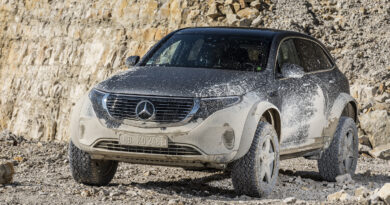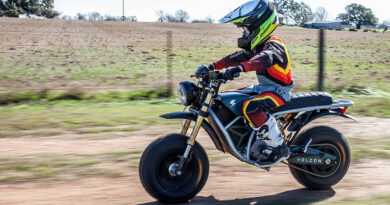New Hyundai Tucson SUV includes hybrid and PHEV
Hyundai has unveiled its all-new Tucson mid-sized SUV, which will be available as a hybrid and plug-in hybrid electric vehicle for the first time – overseas, at least.
More angles, creases and sharp edges define the new Toyota RAV4 and Mazda CX-5 competitor that embraces Hyundai’s “sensuous sportiness” design.
The occasionally busy look of the new Tucson is defined at the front with a “parametric” grille that cleverly incorporates LED lights on its outer edges.
Want the latest EV news and reviews delivered to your inbox? Subscribe to our newsletter!
It’s part of the bold design that has details and corners from every angle and is rounded out by equally aggressive tail lights that include an LED strip across the width of the tailgate. The Hyundai badge is now incorporated into the rear window.
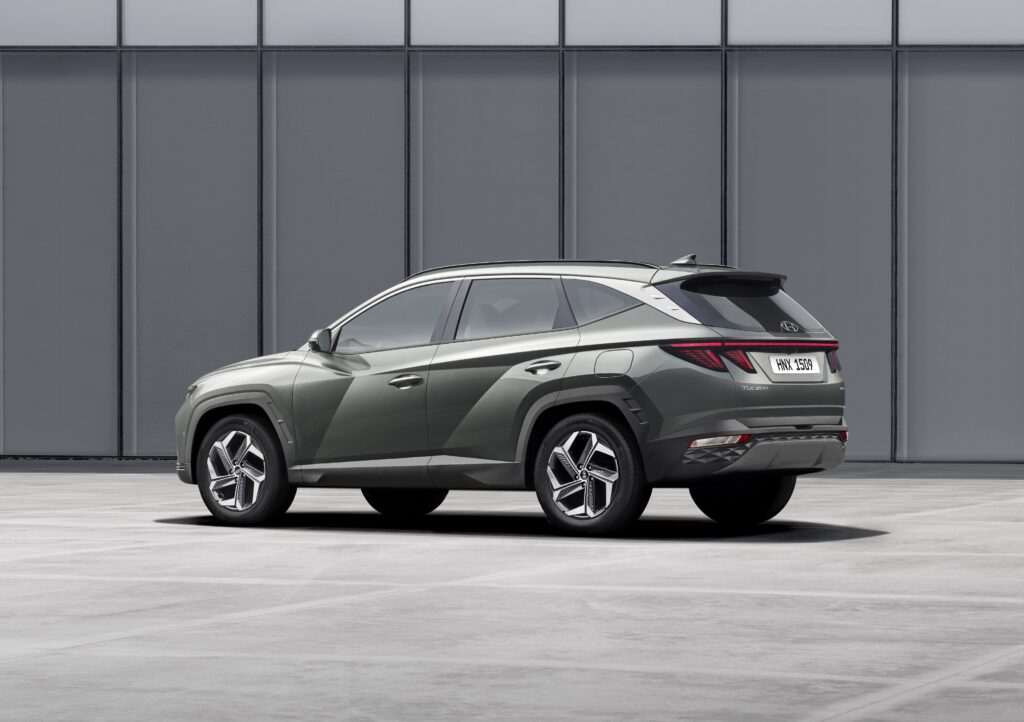
The Tucson will be available as a short- and long-wheelbase model for the first time, the longer model adding 75mm more between the front and rear wheels, something that directly boosts the rear legroom.
Australia will only get the longer version when the new Tucson arrives in the first half of 2021. The new car is also larger overall than the previous Tucson.
The Tucson will also be available with a sportier-looking N-Line design pack.
Pricing has not been revealed, but it expected it to kick off from the low-$30,000 mark.
Tech the trend inside new Tucson
The cabin is designed to convey a “feeling of openness and serenity”, something that kicks off with more of that design boldness and lashings of tech.
The instrument cluster is fully digital and doesn’t have a shroud, instead featuring a matte finish to minimise reflections.
Base models get an 8.0-inch touchscreen with Apple CarPlay and Android Auto and two phones can be connected at the same time.

Top variants get a 10.25-inch central touchscreen stacked on top of a layer of touch pads to take care of all comfort and infotainment features. It includes split-screen functionality for multi-tasking.
No buttons or dials means virtual buttons take control of everything, from the ventilation to the audio adjustment. Voice control is said to understand natural speech, although given efforts from the likes of Mercedes-Benz we’ll believe it when we see (or hear) it…
Smartphone as a key
The new Hyundai Tucson will feature Hyundai’s new Digital Key.
Digital Key uses a smartphone app and nearfield communication (NFC) to allow owners to lock, unlock and start the car using only their phone.
It also allows for a panic alert and remote starting from up to 27 metres away.
The connectivity also includes functionality that allows interaction with a smart home; you can turn the air-conditioning or lights on from within the car’s touchscreen.
It’s part of a big tech focus that also includes the latest active safety features, including auto braking, blind spot warning and a safe exit warning system to prevent door opening into other vehicles or cyclists.
The Tucson also has a remote parking system, allowing the car to be driven forward or backwards from outside the car for short distances to fit into tight spots.
New powertrains not for Australia
A new 2.5-litre engine four-cylinder petrol engine will not initially make it to Australia, with the existing car’s 2.0-litre petrol and diesel and 1.6-litre turbo petrol making up the range.
There’s also a hybrid drivetrain that pairs a 1.6-litre four-cylinder turbo engine with a 44.2kW electric motor. The engine produces 134kW/264Nm and when teamed with the electric motor makes a combined 171kW/348Nm.
No word on fuel efficiency, although Hyundai says the Tucson hybrid can drive from Los Angeles to Tucson (in Arizona) on a single tank; that’s about 782km.
The Tucson PHEV makes more power – presumably by using a more powerful electric motor (details are not yet available). The claimed peak power output is 265ps, which converts to about 195kW.
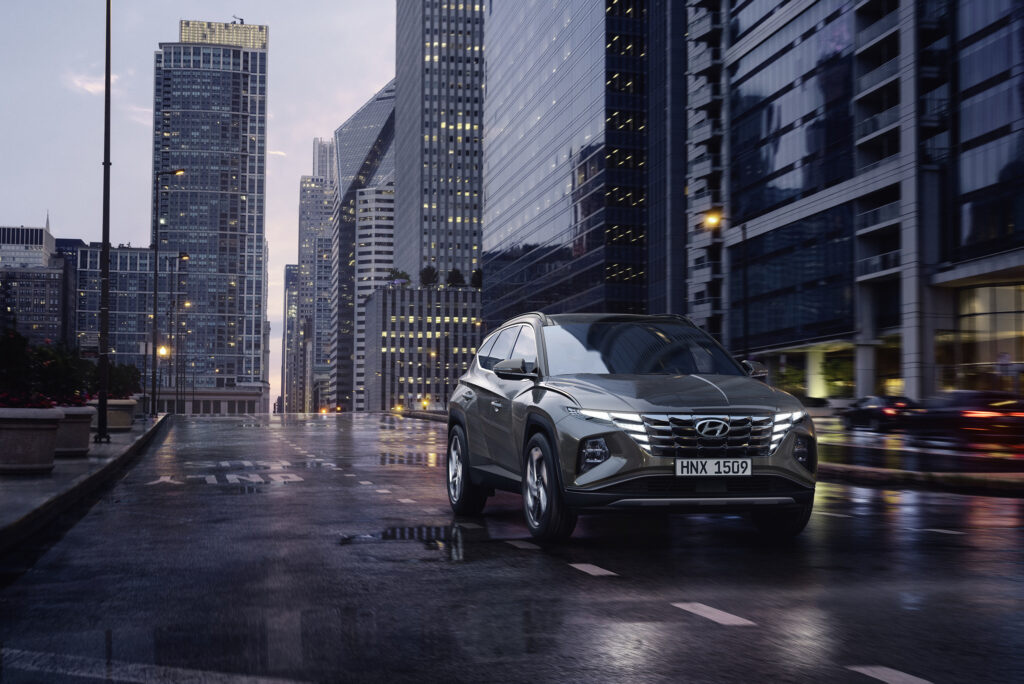
Hyundai has also added a system it calls E-Handling to the hybrid and PHEV models.
There aren’t many details, but presumably it uses the electric motor capabilities to better apportion drive, in effect creating a form of torque vectoring. Hyundai says it improves steering response and directional stability, especially in adverse conditions, where grip levels may be lower.
The Tucson hybrid and PHEV are officially “under consideration” for Australia, but are highly unlikely to arrive early in the car’s life.
That’s a blow given the success of the Toyota RAV4, which has experienced unprecedented demand for its hybrid version; in August 2020 the Hybrid made up 91 percent of RAV4 sales and marked the first time a hybrid vehicle topped the sales charts in Australia.
Hyundai Australia’s general manager of corporate communications, Bill Thomas, told EV Central the decision not to initially offer the hybrid was a matter of priorities and global demand.
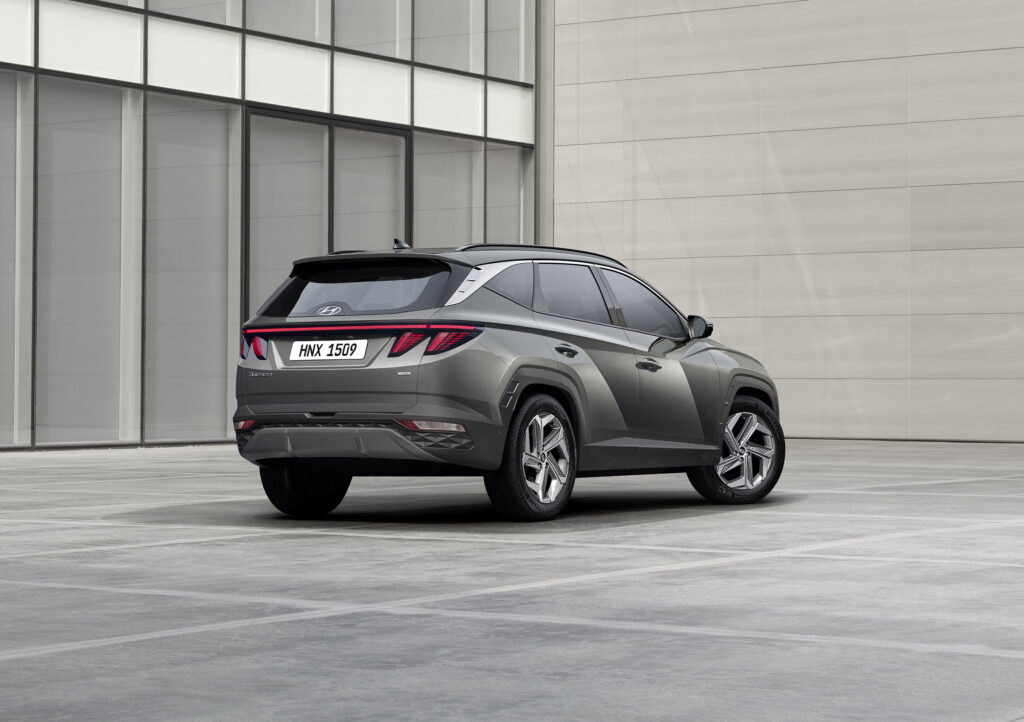
“We want to get it but we’re not confirmed with it yet,” said Thomas. “We’ve put out hands up for these cars and we’re really interested in them.”
He suggested the hybrids would initially be used to help lower emissions where regulations required it.
Australia has no regulations surrounding CO2 emissions, only non-enforceable targets set by the Federal Chamber of Automotive Industries.
“Australia is a very different market when it comes to emissions standards,” said Thomas. “It’s going to be sensible for the parent company to prioritise more advanced markets [with stricter emissions requirements].”
Santa Fe Hybrid confirmed for 2021
That said, Hyundai’s hybrid strategy is set to step up a gear with confirmation it will begin selling the larger Sante Fe Hybrid in 2021.
The Santa Fe Hybrid gets the same 1.6-litre turbo four-cylinder used in the Tucson hybrid matched to a 44KW electric motor. Combined output for the Santa Fe Hybrid is 169kW and 350Nm. Its electrical system includes a 1.5kWh lithium-ion battery.
However, whereas sister brand Kia is promising to unleash both the hybrid and plug-in hybrid versions of its rival Sorento, Hyundai Australia currently has no plans to sell the Santa Fe PHEV.
Hyundai’s SUV range – which includes the Venue, Kona, Tucson and Santa Fe – will be rounded out in 2021 with the arrival of the large Palisade, which has seven- and eight-seat configurations.
No word yet on whether the Palisade will come with a hybrid system, but if it does don’t expect it to arrive any Australia any time soon.


